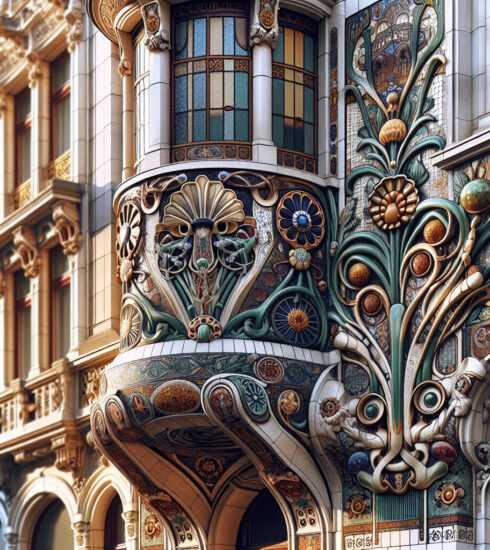Unveiling Belgiums Surrealist Vision: Dive into a Fascinating Artistic Journey
Introduction
Belgium, the small country in Western Europe, is known for its stunning architecture, delicious chocolates, and rich cultural history. But there is one aspect of Belgian culture that often goes unnoticed: its contribution to surrealism. Surrealism is an art movement that emerged in the early 20th century, characterized by its exploration of the subconscious and the irrational. Belgium has produced some of the most influential surrealists in history, and their works continue to captivate audiences around the world. In this article, we will take a fascinating journey into Belgium’s surrealist vision, exploring the artists, their works, and the impact they have had on the art world.
The Origins of Belgian Surrealism
Belgian surrealism, like its European counterparts, can be traced back to the influence of the French poet and critic André Breton. Breton’s 1924 manifesto, “Manifeste du Surréalisme,” laid the foundation for the movement, emphasizing the power of the subconscious and the rejection of rationality. However, Belgian surrealism had its own unique characteristics that set it apart from other surrealist movements.
One of the key figures in Belgian surrealism was René Magritte. Born in Lessines, Belgium, in 1898, Magritte is often considered the father of Belgian surrealism. His iconic paintings, such as “The Treachery of Images” and “The Son of Man,” challenge the viewer’s perception of reality and explore the juxtaposition of objects.
Another important figure in Belgian surrealism was Paul Delvaux. Delvaux, born in Antheit, Belgium, in 1897, was influenced by the works of Giorgio de Chirico and Salvador Dalí. His paintings often depict eerie landscapes populated by nude women and skeletons, creating a dreamlike atmosphere.
Other notable Belgian surrealist artists include Marcel Mariën, E.L.T. Mesens, and Jane Graverol. These artists, alongside Magritte and Delvaux, formed the core of Belgian surrealism, each bringing their own unique style and perspective.
The Themes of Belgian Surrealism
Belgian surrealism explored a wide range of themes and motifs, often challenging societal norms and expectations. Some of the recurring themes in Belgian surrealist art include:
- Identity and the self
- Sexuality and desire
- Death and the macabre
- Dreams and the subconscious
- Everyday objects and their transformation
- Social and political commentary
These themes were often depicted through the use of symbolism and juxtaposition, creating a sense of mystery and intrigue in the artwork. Belgian surrealism aimed to push the boundaries of artistic expression and challenge the viewer’s perceptions.
The Legacy of Belgian Surrealism
Belgian surrealism has had a lasting impact on the art world, influencing subsequent generations of artists and shaping the direction of contemporary art. The works of Magritte, Delvaux, and other Belgian surrealist artists continue to be celebrated and studied for their innovative techniques and thought-provoking concepts.

One of the most significant contributions of Belgian surrealism was its exploration of the subconscious and the human psyche. Belgian surrealists delved into the depths of the mind, creating art that tapped into universal truths and emotions. This introspective approach to art paved the way for later movements, such as abstract expressionism and pop art.
Additionally, Belgian surrealism challenged traditional notions of art and beauty. The movement embraced the irrational and the mysterious, often subverting traditional artistic conventions. This rejection of the norm opened up new possibilities for artistic expression and paved the way for more experimental forms of art.
Belgium’s surrealists also had a profound impact on the development of film. René Magritte, in particular, explored the relationship between painting and cinema, and his ideas influenced filmmakers such as Luis Buñuel and Federico Fellini. The surrealist aesthetic, with its dreamlike imagery and nonlinear narratives, continues to inspire filmmakers to this day.
Exploring Belgian Surrealism Today
For those interested in delving deeper into Belgian surrealism, there are several museums and galleries in Belgium that showcase the works of the country’s surrealist artists.
The Magritte Museum in Brussels is a must-visit for any art lover. The museum houses the largest collection of Magritte’s works in the world, showcasing his iconic paintings and sculptures. Visitors can explore the artist’s career and gain a deeper understanding of his unique approach to art.
The Musée Paul Delvaux in Saint-Idesbald is another museum dedicated to Belgian surrealism. The museum displays a comprehensive collection of Delvaux’s paintings, allowing visitors to immerse themselves in his dreamlike world.
Aside from museums, there are also several art galleries in Belgium that specialize in surrealism. Galerie Jacques Cerami in Charleroi and Galerie de L’Ô in Brussels are just two examples of galleries that exhibit works by Belgian surrealist artists.
If you’re looking to further expand your knowledge of Belgian surrealism, there are also several books and publications available on the subject. “Belgian Art: From Symbolism to Surrealism” by Michel Draguet and “Surrealism in Belgium: The Discreet Charm of the Bourgeoisie” by Xavier Cannone are two highly recommended books that provide in-depth insights into Belgian surrealism.
Conclusion
Belgian surrealism is a fascinating and often overlooked aspect of the country’s cultural heritage. The works of Magritte, Delvaux, and other Belgian surrealist artists continue to captivate audiences around the world, challenging our perceptions and inviting us to explore the depths of our subconscious. The legacy of Belgian surrealism can be seen in contemporary art and film, as well as in the numerous museums and galleries dedicated to showcasing the works of these visionary artists. So, the next time you find yourself in Belgium, make sure to take a journey into the surrealist vision that lies beyond the looking glass.
Internal Links
External Link
- Wikipedia – Belgian Surrealism






